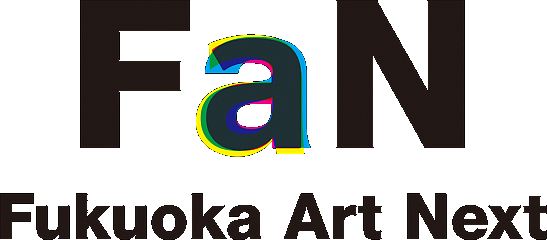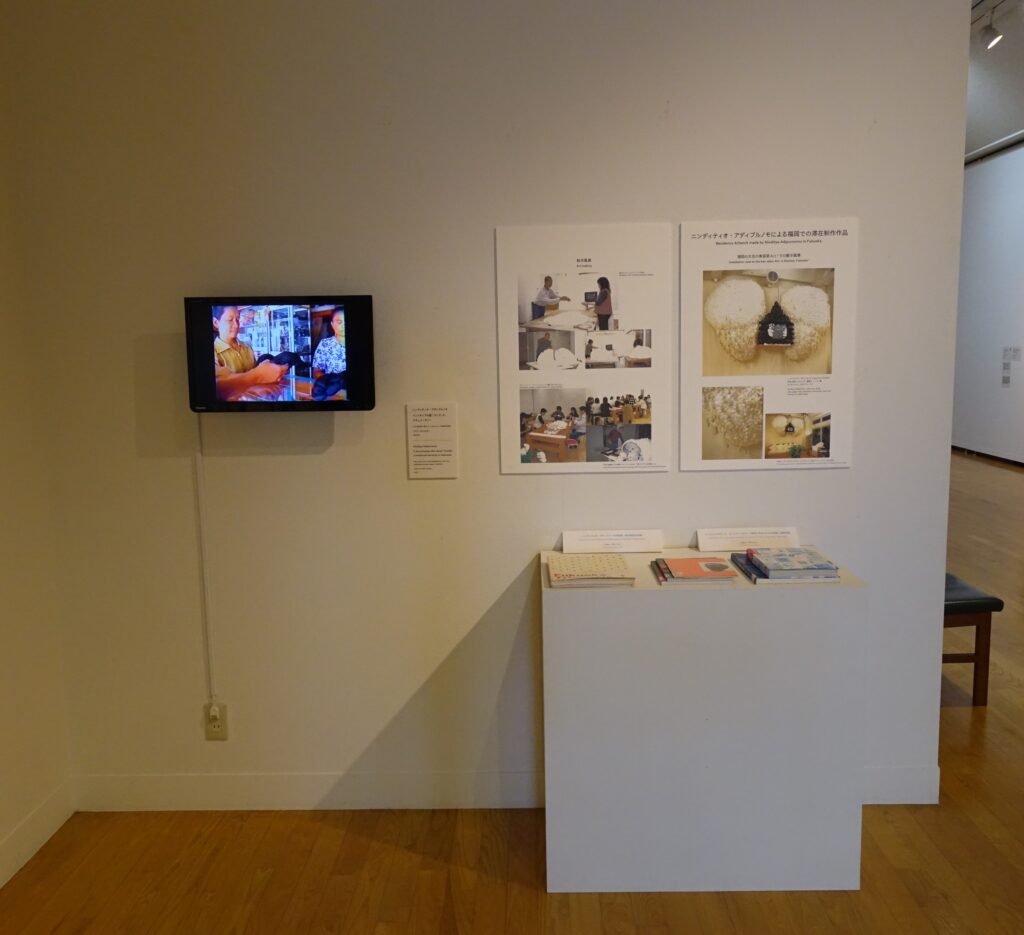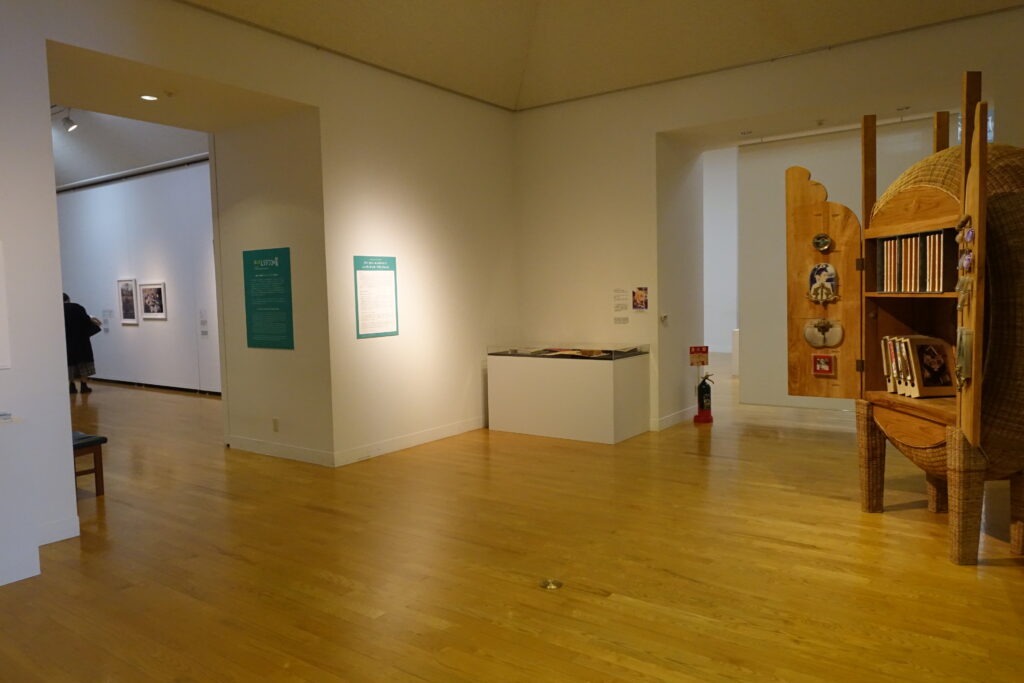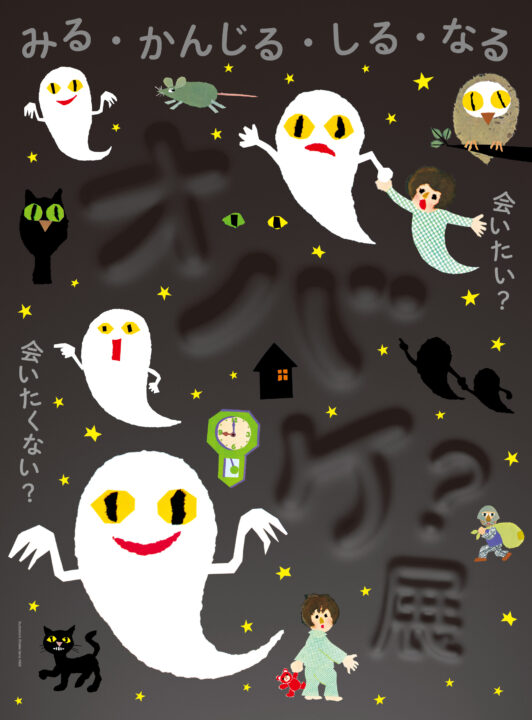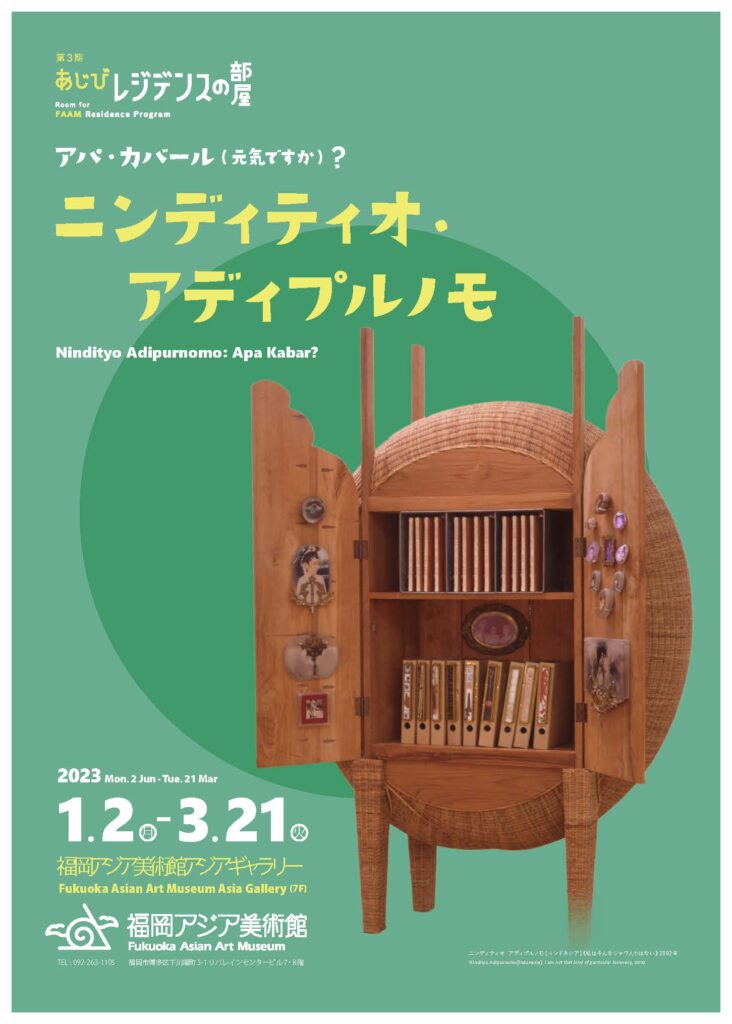
Room for FAAM Residence Program Part Ⅲ Nindityo Adipurnomo: Apa Kabar?
- Period
- Jan 2, 2023 〜 Mar 21, 2023
- Venue
Asia GalleryB, Fukuoka Asian Art Museum
Room for the FAAM Residence Program:
Fukuoka Asian Art Museum Artist in Residence Program
Since its inauguration in 1999, Fukuoka Asian Art Museum (FAAM) has conducted their Artist in Residence Program, which invites artists and researchers from Asia every year to stay for a certain period and cultivate exchanges through collaborative art-making, workshops, exhibitions, talks, and other programs with citizens. Through the program, FAAM intends to promote local people’s further understanding of Asian arts and cultures, which is expected for us to become a hub of artistic exchanges in Asia. As of 2022, 115 artists and researchers have stayed in our museum, many of whom continue to work actively worldwide.
The Artists in Residence program made a new start from its second period of 2022 (September to December), to enlarge the whole program as part of the Fukuoka Art Next (conducted by the Fukuoka city government aiming to embellish the city with the arts). Artists from around the world including but not limited to Asian countries or regions are invited to create artworks in the studio at the Artist Cafe Fukuoka (former Maizuru junior high school located in Maizuru Park). Through providing various kinds of opportunities for art-making and presentations, we aim to support artists to develop their potentials and inspire each other to take new steps forward to further expand their career from Fukuoka to the world.
‘Room for the FAAM Artist in Residence Program’ introduces activities of the artists and researchers who participated in the past residency program or Fukuoka Asian Art Triennale, including their later achievements. We would like the visitors to feel stimulating exchanges between people in Fukuoka and the participating artists or researchers.
—————————————————————————————–
Foreward
Nindityo Adipurnomo (1961-) is the key figure in Indonesian contemporary art, a well-known artist who receives worldwide attention. In 2002, as the participating artist in Fukuoka Asian Art Triennale 2002 (FT2), Nindityo stayed in Fukuoka for three weeks. This exhibition will introduce the artist’s activities through the documentations and references at the time and his artworks from our museum collection.
Currently based in Yogyakarta, Nindityo was 41 years old at the time of residency in Fukuoka. As an internationally known artist working on the theme of Javanese culture, he founded the Cemeti Gallery in 1988. In contrast to rapid commercialization in the local art scene at the time, the artist supported emerging artists who sought experimental ways of expression and worked hard to build an international network. Moreover, in 1995 Nindityo founded the Cemeti Art Foundation, currently works as IVAA (Indonesia Visual Art Archive) that distributes its research and archive materials of art to public so as to engage in continuous development of art in Indonesia.
Artworks created during the Residency in Fukuoka
Participatory Installation Inter-Act.
Around 2000, Nindityo was working on the theme of konde, a traditional hairdo(topknot) done for Javanese women on occasions such as rituals, in a series of works questioning its means and values. During the residency in Fukuoka, Nindityo developed the idea to create Inter-Act. in a hair salon located in the Daimyo area in Fukuoka.
Two objects shaped like a topknot and a monitor surrounded by topknots were placed in the waiting room at the hair salon. The monitor showed videos (on view in this exhibit) with different scenes in which the topknots have symbolic meanings in Indonesia. The work was a participatory installation piece, and visitors who came to the hair salon cut their hair by themselves and stuffed them in race bags with silverwork attached, to hang on the objects.
In I am not that kind of particular Javanese, Nindityo worked together with Indonesian craftspeople specialized in cane work. Similarly, during his residency in Fukuoka, the artist also collaborated with the local hairdresser, customers of the hair salon, and many art volunteers who came to help make his work. Nindityo questioned the potential of collaborative work as a method, as well as the hidden issues underneath.
From Daimyo to Tenjin “Jalan Jalan (to go for a walk)”
Nindityo wore Japanese topknots on his head and makeup on his face at the same hair salon in Daimyo. Wearing a kimono, the artist went for “Jalan Jalan” (which means taking a walk in the Indonesian language) in Fukuoka. Just like men who appeared in Portraits of Javanese men covered their faces with konde that regulates Javanese women in cultural contexts, this time Nindityo himself wore Japanese topknot to experience the effects caused by traditional culture and social norms such as gender.
20 years since then, as a visual artist Nindityo has been actively working to create works that transcend various borders and frameworks. Recently he has collaborated with filmmakers or choreographers, conducted research in terms of the artistic context where different cultures co-exist, and worked on various kinds of art projects that try to challenge existing values. In 2017, after 34 years of establishing the Cemeti Art Foundation, Nindityo renamed it as Cemeti – Insitute for Art and Society, seeking further artistic practice which works closely with social and political contexts.
Nindityo, Apa Kabar (how are you)?
Reference :
Hirota Midori, A Network of Collaboration and Symbiosis: Ethnography of Indonesian Contemporary Art, grambooks, 2022
Nindityo Adipurnomo, Tolerance, Cemeti Art House, 2002
| Venue | Asia GalleryB, Fukuoka Asian Art Museum |
|---|---|
| Admission | Adult 200 (150) yen/ High school or College students150 (100) yen/ Free admission for Junior High School students and Under |
| Organiser | Fukuoka Asian Art Museum |
| Contact | Tel: +81(0)92-263-1100 |

